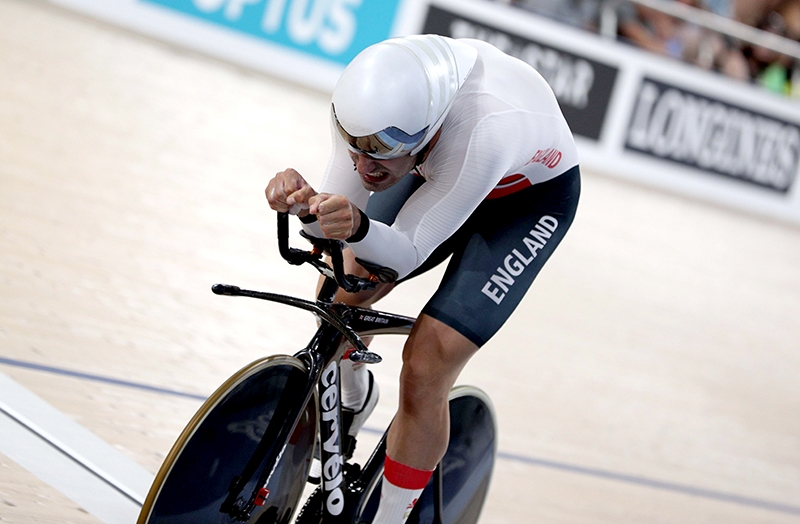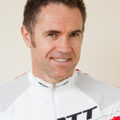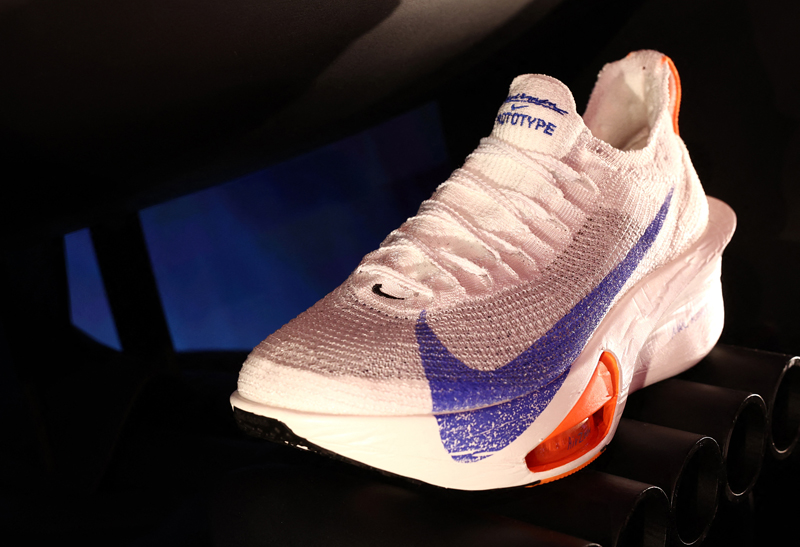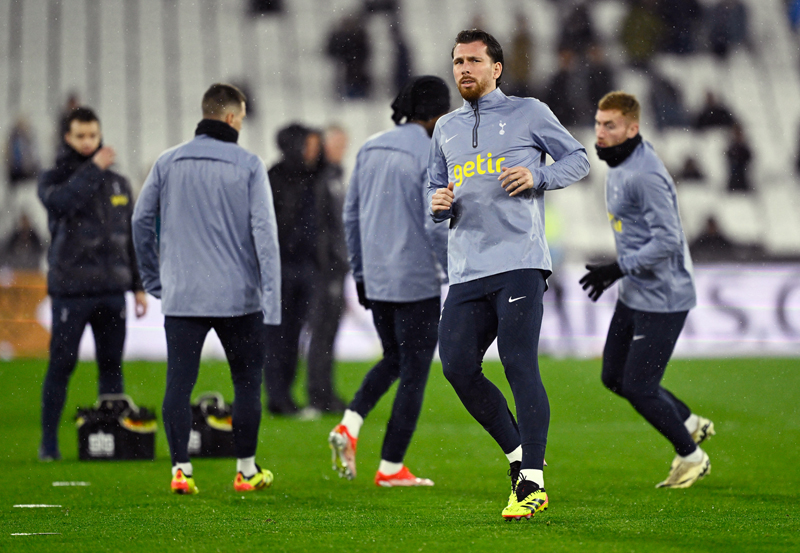You are viewing 1 of your 1 free articles. For unlimited access take a risk-free trial
Cycling's hour record: what does it teach us about faster riding?
Joe Beer looks back at the records and technological progress in cycling’s ‘Race of truth’. How have things changed over the past three decades, and what can today’s cyclists learn?
Going faster and using great technologies to do it are both human obsessions. After all, who hasn’t wondered when the first sub-2 hour marathon will be run? Technological progress over the past 30 years has been immense. Take computers for example; the laptop of the late 80’s would take a year to process what today’s version does in 5 seconds. That’s a staggering 6.8 million times faster! By contrast, sporting records over the same 30 years have progressed at a much slower pace, but they are still noteworthy.The hour record
Why is the hour record so important in cycling? Well (along with time-trial records), they challenge human beings to be at their very best - a ‘pureness’ of solo rider verses distance, or time. There are no teammates and no second step of a podium to be content with. Winning races can be easy because it depends who is there on the day. But the hour record requires riders to nudge the limit of human ability. As current Paracycling hour record holder Colin Lynch put it “Pacing an hour record correctly is THE most critical element. Get it wrong and you’ll be on your knees before the halfway point and there’s no coming back. The track offers no respite, no easy laps and no change of gears to give you a break.”Franceso Moser

An historical look
Back in 1987 the men’s and women’s cycling hour records belonged to Franceso Moser with 31.78 miles (51.151k) and Jeannie Longo 27.81 miles (44.770 km) respectively. Think about that; around 30mph for 60-minutes, with no downhills, or other riders and traffic to aid you. In 1987 the fastest times recorded for 10-mile time trial on UK roads stood at 19 minutes 11 seconds for Dave Lloyd and 21:25 for Beryl Burton – this latter mark would stand the test for two decades before being beaten.Box 1: Hour record progression over the decades

Fast forward 30 years and the road records have progressively dropped (see box 1 above). However, the hour record has ebbed and flowed as rule changes have attempted to keep up with cunning plans to gain an edge with new technologies and ideas. As for predicting future progress, that’s not easy. A detailed look at this topic concluded that ‘attempting to predict the future in detail is a largely futile exercise’J [1] New scientist. November 19th 2016, (3100) p.30-31. That is largely because there is no crystal ball to know the rules, technologies and athletes that will appear in the future. So I took the easy option – to look back at the previous hour records (see box 2)!
Box 2: The hour record landmarks (and rule changes!)
Since its official inception in 1893 the hour record has had some significant records and riders. Here are some of the key ones:

It’s in the numbers
Clearly, technology has always been used to help the best riders gain an edge with perhaps Moser’s record standing out as the biggest technological leap of any era. However, the rider is still the key as the numbers below attest to; try holding such wattages for even 60 seconds, let alone 60-minutes! In the hour record, a rider cannot use an ‘in-view’ power meter or heart rate monitor. Previous riders’ efforts have therefore been estimatedJ. Appl. Physiol 2000. 89: 1522-1527., tested in preparationMed. Sci. Sports Exerc 1999. 31(11): P. 1665-1676, and monitored during actual 40-minute dry-runs. Nowadays, data can be grabbed for posterity using data systems hidden from the wind under the seat – although they are rarely published publicly. Using various sources and conversations, box 3 lists my best estimate of average power outputs over some of the attempts:Box 3 Best estimates of power outputs during hour record attempts
| Rider | Average power output (watts) |
|---|---|
| Wiggins | 440-450 |
| Dowsett | 420-430 |
| Rominger | 450-460 |
| Boardman | 420-440 |
| Merckx | 360-400 |
| Indurain | 436-500 |
| Moser | 400-430 |
| Obree | 380-410 |
Cycling cyborgs
Technology and science have helped improve the hour record times. So what in particular has been important over the years in moving things forward? Here are my personal favourites in the areas of training, nutrition and technology:*TRAINING – using power-measuring devices during training, race simulation and specific interval routines has helped dramatically for riders seeking a specific outcome. Whether on the track or road, the power required to do your best can often be known ahead of the start gun going off. Each element of a record ride – from the tyres, road/track surface, weather, skinsuit modification or helmet – can all be quantified in terms of watts, and therefore tweaked to help the rider compare performance to his/her maximum. If a rider cannot sustain a level of power, this shows they may be tired. If they go too hard in a simulation, it demonstrates to them how they would blow up by halfway! It can also prove that the latest round of training and recovery have helped the rider get stronger.
COACH TIP: If you’re getting serious about fitness and performance a power measuring tool is a keen investment.
*NUTRITION – Though it is not talked about publicly, many elite riders resort to ‘supplement stacking’ when attempting a record. The specifics are rarely made available but the most likely supplements used are sodium bicarbonate, sodium phosphate, beta alanine and L-carnitine. Although such a strategy may only add 1 percent of performance, that’s often all that breaking a records takes. Diet is another factor; my personal conversations with record holders confirm they are not just on an ‘average balanced diet’!
COACH TIP: whatever your goals, food types and timings, weight goals and nutritional recovery strategies are important to address for faster times.
*TECHNOLOGY – In Michael Hutchinson’s book ‘Faster’, he speaks about skin suitsHutchinson, M. (2014) The Obsession, Science and Luck Behind the World’s Fastest Cyclists. B100msbury Publishing ISBN: 1408843757. As he explains: “In the course of assessing equipment for the world hour record, suit use was one of the biggest improvements I found. Having switched to the new suit, it still didn’t occur to me that there might be more to come from this line of enquiry. I hadn’t twigged that skin suits are a piece of technical equipment. Your skinsuit matters more than your bike”. From Moser’s full length skinsuit to the multiple suits that modern day riders squeeze into, the science shows that clothing really does count. My own insider information and experience has demonstrated to me that every detail of measurement and manufacture of clothing – such as seam placement to hiding the race number inside a SpeedPocket window – can significantly aid cycling performance.
COACH TIP: spending on tight fitting clothing really can make your cycling easier and faster. The use of multiple socks, shoe covers, number attachment systems and helmets suggests that ‘faster’ can be bought!
Boardman: the benefit of technology
To appreciate the benefits of technology in hour-record attempts, let’s compare Boardman’s 1996 (pre-UCI restrictions) and 2000 (post-UCI restrictions) efforts:1996 – 56.375km – UCI ‘best human effort’

- Bike: streamlined Eddy Merckx (resprayed Lotus) bike
- Wheels: Mavic 5-spoke carbon front and rear disk wheels
- Position: Superman outstretched arms on Cinelli custom bars, without any padding
- Helmet: Giro ‘professional-only’ head fairing
2000 – 49.441km former UCI hour record***

- Bike: conventional Look round-tubed carbon bike
- Wheels: 16 and 20 spoke standard box-section wheels
- Position: drop bar conventional riding position
- Helmet: Giro safety approved helmet with no vents (*** prior to 2014 UCI unified record changes)
Back to the future
What kind of improvements in the hour record can we expect over the next 30 years? That will depend to an extent on how much further technological advances are constrained by rules – as well as how much it means to cyclists to attack such a hard record!UCI rule changes, which may extend the ratio of all structures such as bike frame tubes and handlebars, beyond the 3:1 (length:width ratio), and loosen the restrictions on allowable fabrics are likely to help riders gain big reductions in drag, which could in turn encourage more riders to attempt the hour record.
CASE STUDY: Colin Lynch

Colin Lynch set the Paracycling hour record in October 2016. We asked him about his cycling clothing, what he does in the hour prior to an attempt, and whether he’ll do it again?
- Arrive at track (90 minutes before start)
- Set up turbo, warmup bike, race bike, pump tyres, etc.
- Bike and equipment check to make sure everything is UCI-compliant*
- Pre-race carbohydrate gels and warm-up protocol (20 minute progressive warm-up on turbo trainer)
- Squeeze into skinsuit and final bike check
- A few laps of the track before heading to the start gate!
Other ‘trickle-down’ practical tips for more speed
There’s no such thing as free speed. If you take time, physical effort or money to purchase something then there has been a cost. It's getting the most relevant gain per pound that's important.Tuck Position – My experience with the ‘Bioracer Aero’ system from amateurs to Ironman winners shows reducing frontal area lowers drag by 10-40 watts! A narrow arm, close to flat torso and integrated aero helmet can do wonders to beat the wind.
COACH TIP: ride on an indoor trainer in front of a mirror to practice the perfect tuck, and variations of it.
Body Composition – Dropping body fat levels may only reduce rolling resistance a very small amount. However, it helps reduce frontal area too. Also, if you ride hilly events such as sportives or hilly climb time trials, every kilogram off you and the bike will help you overcome the penalty of gravity.
COACH TIP: work back from your goal event and set a starting point to begin taking weight loss seriously. Use an accurate stand on scale with body fat estimation to weekly.
Power – To go faster is quite simple really. You can raise your peak power output with a combination of adequate base aerobic training (4-12 hrs per week), quality resistance training and high-power intervals (accumulating 10-30 minutes of 'high-intensity work' per week).
COACH TIP: see this article for examples of how to train to achieve this.
Aero bars – Using clip-on or integrated aero bars not only reduces arm width and shoulder height compared to riding on the tops, it’s also easier to stay lower for longer than on drop bars.
COACH TIP: get an expert bike fitting (such as Radlabor SMARTFIT) to ensure you are set up to ride ergonomically and efficiently.
Course knowledge – By using traffic flow to your advantage, it is possible to gain 1-3 mph even at safe distancesJ. Appl. Physiol 2000. 89: 1522-1527. - hence the ‘fast-course’ label that some time trials receive in the UK. This may also be down to smooth surface, drop of height from start to finish and localised air flow.
COACH TIP: try using the free website www.mywindsock.com to help estimate the time for a particular course using up-to-theminute weather and GPS data.
Tyre Pressures – Recent hour records have used specific tyres and pressures of over 250psi. However real world tyres with poor rolling characteristics or over-inflated will raise rolling resistance.
COACH TIP: use the independently tested fastest brand, Continental for fast and reliable riding (either ‘GP4000’ for training/sportives or ‘TT’ for time trials/short triathlons).
Other Considerations – Your body is the drag creator, so do not let your knees protrude outwards, ride with your cycle top unzipped or get out of the saddle excessively. These all raise drag.
COACH TIP: when you face head winds or want to go faster, assume a narrow position and ensure you have no flapping clothing.
Newsletter Sign Up
Testimonials
Dr. Alexandra Fandetti-Robin, Back & Body Chiropractic
Elspeth Cowell MSCh DpodM SRCh HCPC reg
William Hunter, Nuffield Health
Newsletter Sign Up
Coaches Testimonials
Dr. Alexandra Fandetti-Robin, Back & Body Chiropractic
Elspeth Cowell MSCh DpodM SRCh HCPC reg
William Hunter, Nuffield Health
Keep up with latest sports science research and apply it to maximize performance
Today you have the chance to join a group of athletes, and sports coaches/trainers who all have something special in common...
They use the latest research to improve performance for themselves and their clients - both athletes and sports teams - with help from global specialists in the fields of sports science, sports medicine and sports psychology.
They do this by reading Sports Performance Bulletin, an easy-to-digest but serious-minded journal dedicated to high performance sports. SPB offers a wealth of information and insight into the latest research, in an easily-accessible and understood format, along with a wealth of practical recommendations.
*includes 3 coaching manuals
Get Inspired
All the latest techniques and approaches
Sports Performance Bulletin helps dedicated endurance athletes improve their performance. Sense-checking the latest sports science research, and sourcing evidence and case studies to support findings, Sports Performance Bulletin turns proven insights into easily digestible practical advice. Supporting athletes, coaches and professionals who wish to ensure their guidance and programmes are kept right up to date and based on credible science.











